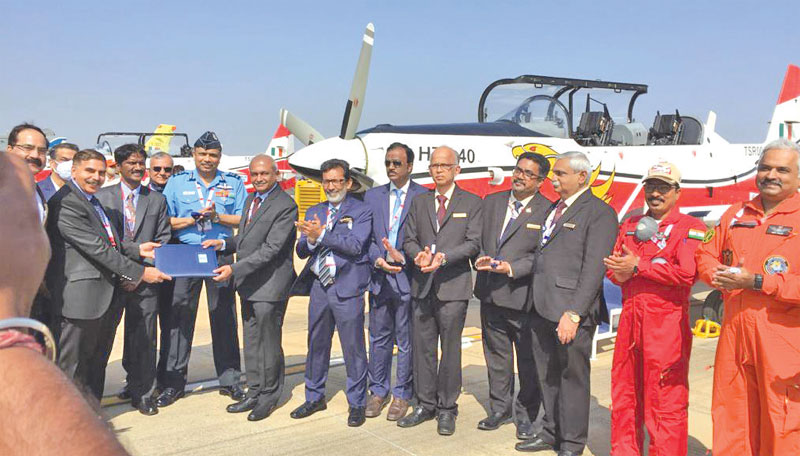The IAF is once again facing a shortfall in its basic trainer aircraft fleet
Atul Chandra
The Indian Air Force (IAF) is once again faced with a shortfall in its requirements for a Basic Trainer Aircraft (BTA), less than a decade after the situation was thought to be resolved with the induction of the Swiss made Pilatus PC-7 MKII BTA.

The inability of the IAF to resolve its basic training requirements, the bedrock on which its future pilots and leaders are trained must be considered as a major failure for the service. It now appears that there will be no early resolution for the IAF’s Stage-I, Stage-II and Stage-III requirements at least till the end of this decade. This is especially the case considering that globally there is a dramatic shift in pilot training. With increased use of simulation for flight training, it becomes increasingly difficult to dovetail these technologies and training systems across a disparate fleet of training aircraft.
Bumpy Ride
The IAF’s present PC-7MKIIs was procured following the unprecedented grounding in 2009 of the entire fleet of Hindustan Aeronautics Limited (HAL) built Hindustan Piston Trainer 32 (HPT-32) ‘Deepak’ following a series of fatal accidents. At the time of its induction in 2013, the PC-7 MKII revolutionised the IAF’s training infrastructure with introduction of modern full-mission and fixed-base simulators, Ground Mission Debriefing Systems (GMDS), etc. Allegations of impropriety in the Pilatus PC-7 MKII contract led to the cancellation of the option for 38 additional aircraft and the IAF is now left with only 75 of the type.
The PC-7 MKII fleet will be replaced over the longer term by HAL’s indigenously developed Hindustan Turbo Trainer 40 (HTT-40), but it will be available in significant numbers only post 2025 resulting in a major headache for the IAF in the near term as it requires new BTAs. The IAF released a Request for Information (RFI) for lease of 20 BTA’s in March. However, insufficient bids were received, following which the date for submission was extended. It is not known publicly as yet, if the IAF is looking to lease additional PC-7 MKIIs or a new type. Inducting new BTAs on lease will mean additional costs in training, creation of new infrastructure and building up stocks of spares.
The IAF badly needs additional BTAs as it is already facing a shortfall in pilot strength vis a vis what is sanctioned by the government. In a reply in Parliament in March, the ministry of defence (MoD) stated that there is a shortage of pilots, with the strength of pilots versus the sanctioned establishment in the IAF, at 3,834 and 4,239 respectively as on 1 March 2021. This is a shortage of 405 pilots. The MoD also informed Parliament that induction numbers have been increased with a total of 203 Joining Instructions issued for the Flying branch across the National Defence Academy/ Air Force Academy (NDA/AFA) in 2020. To address the pilot shortage, a new additional Selection Centre (5 AFSB) established at Guwahati started testing of candidates from April 2021 to enable candidates from the Northeast to appear for selection.
HTT-40
HAL received a Request for Proposal (RFP) for 70 HTT-40s with options for 38 more in February. The Defence Acquisition Council (DAC) had originally approved procurement of 106 aircraft. The HTT-40 will be used for basic flight training, aerobatics, instrument flying and close-formation flights along with navigation and night flying as its secondary roles. It will also have the capability to be converted to an armed/ weaponized version at a later stage. The HTT-40 features a spacious and well laid out air-conditioned cockpit with multifunction displays and also has Zero-Zero ejection seats.
HAL will receive the formal contract for 70 aircraft only after issue of certification against successful completion of a Programme Compliance and Quality Review (PCQR). HAL states that it is geared-up to commence HTT-40 deliveries within two years from placement of the order with plans to attain a peak production rate of 20 aircraft per annum. While initial aircraft production as well as further development activities will be carried out at Bengaluru, the bulk of the HTT-40s will be manufactured at HAL’s Nashik plant.
You must be logged in to view this content.

